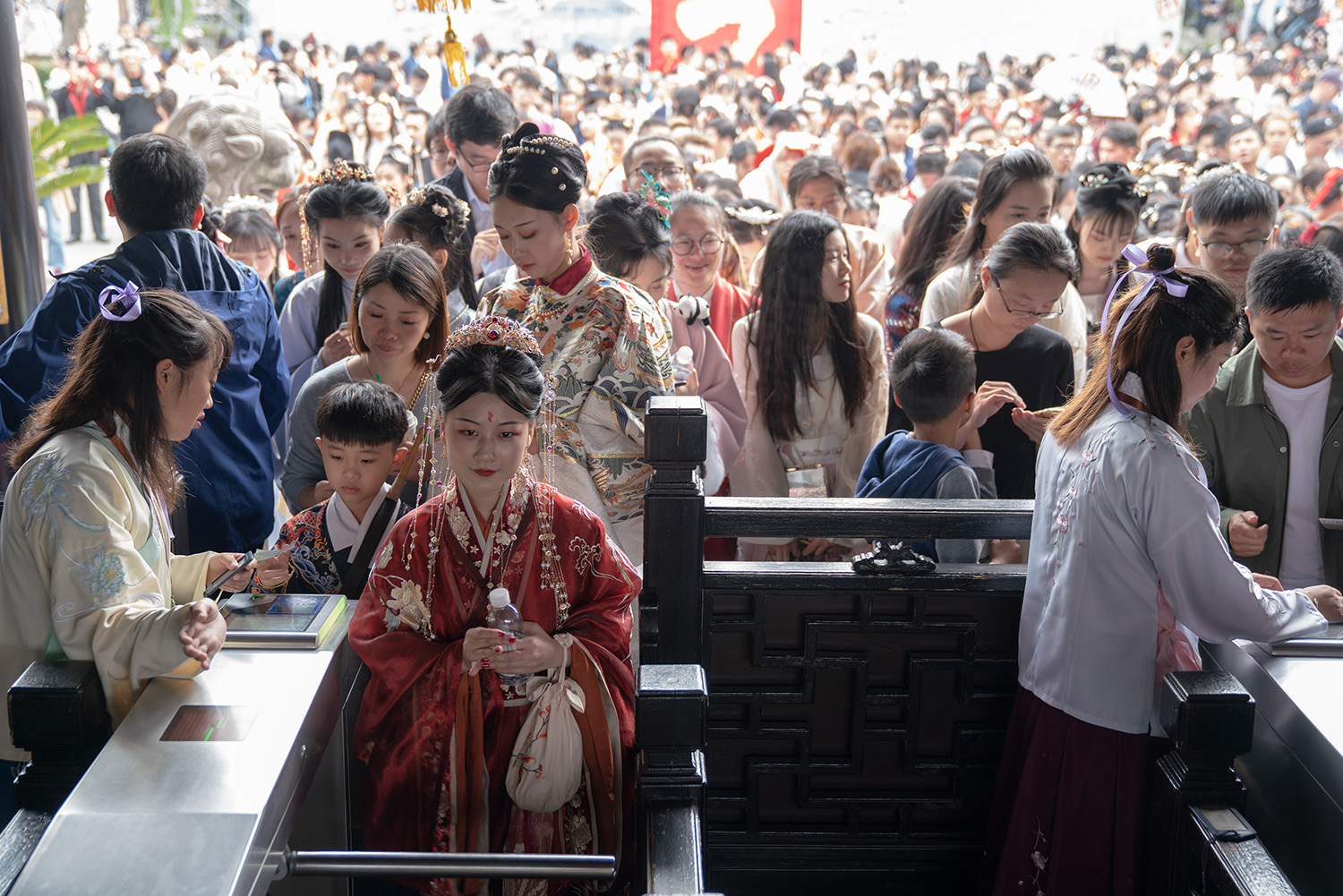The Rise of Hanfu in China | Caixin

The number of people who wear hanfu, a traditional style of dress that ethnic Han Chinese wore before the Manchu-ruled Qing Dynasty, has increased rapidly in the past few years. According to a report conducted and published by Hanfu Information, an account that aggregates information on hanfu, the number of hanfu fans grew from less than 500 thousand in 2015 to more than 2 million in 2018, with the hanfu industry valued at 1 billion RMB (~ 150 million USD). The rise of hanfu is driven by a mix of consumerism, individualism and nationalism. Young people view the garb as a form of self-expression and a way of connecting with traditional culture and their identity in an increasingly globalized world. Photographer Liang Yingfei photographed a hanfu Festival in Xitang, an annual event where hanfu enthusiasts gather to see hanfu fashion shows, watch performances of traditional rituals, shop for hanfu and accessories and meet and make friends. Hanfu’s growing popularity coincides with a government emphasis on preserving and promoting traditional culture. Although it’s hard to say how many hanfu enthusiasts join the movement out of a sense of nationalism, it’s notable that, unlike other youth subcultures imported from foreign countries, such as hip-hop or cosplay, hanfu is a local movement that takes pride in Chinese tradition.
Caption information
The number of people who wear hanfu, a traditional style of dress that ethnic Han Chinese wore before the Manchu-ruled Qing Dynasty, has increased rapidly in the past few years. According to a report conducted and published by Hanfu Information, an account that aggregates information on hanfu, the number of hanfu fans grew from less than 500 thousand in 2015 to more than 2 million in 2018, with the hanfu industry valued at 1 billion RMB (~ 150 million USD). The rise of hanfu is driven by a mix of consumerism, individualism and nationalism. Young people view the garb as a form of self-expression and a way of connecting with traditional culture and their identity in an increasingly globalized world. Photographer Liang Yingfei photographed a hanfu Festival in Xitang, an annual event where hanfu enthusiasts gather to see hanfu fashion shows, watch performances of traditional rituals, shop for hanfu and accessories and meet and make friends. Hanfu’s growing popularity coincides with a government emphasis on preserving and promoting traditional culture. Although it’s hard to say how many hanfu enthusiasts join the movement out of a sense of nationalism, it’s notable that, unlike other youth subcultures imported from foreign countries, such as hip-hop or cosplay, hanfu is a local movement that takes pride in Chinese tradition.



